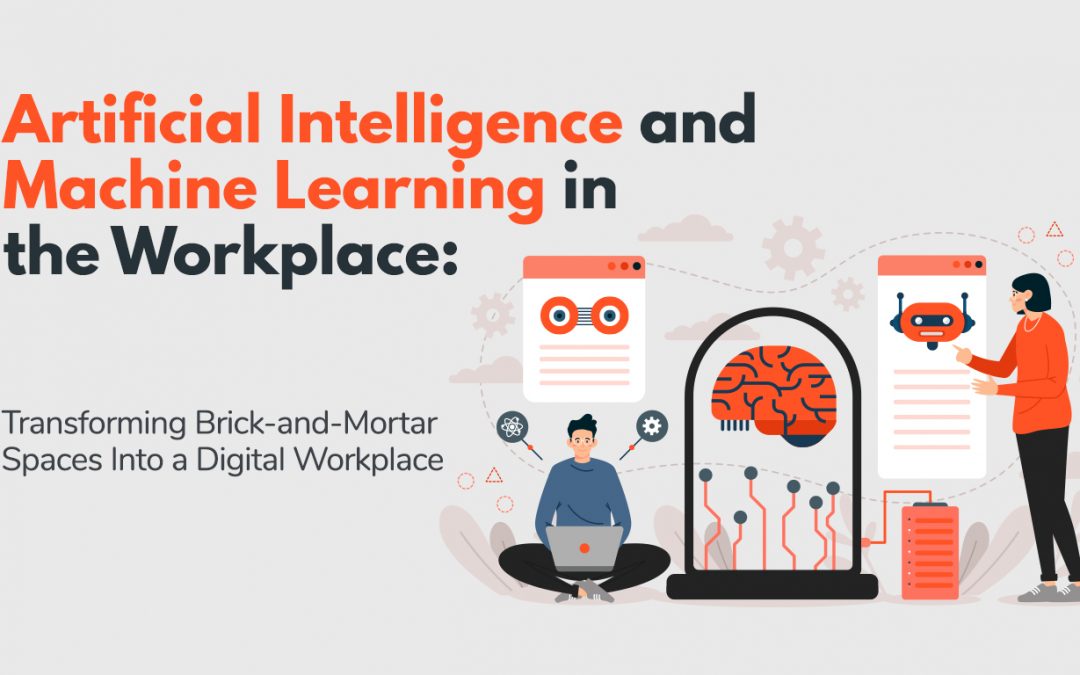Artificial Intelligence. Machine Learning. Concepts that render an equal semblance of vagueness and daunt, especially to those who are still testing the unsure waters of digital transformation. With the accelerated trajectory for a highly digital economy, integrating AI and Machine Learning in the workplace is the path forward – the future of work.
Efforts to advance AI and Machine Learning processes and dispel the myths looming around them are becoming more evident as today’s leading organizations continue to push for these concepts in the workplace. Recent studies show that AI is predicted to become a $266 billion market by 2027 and Machine Learning to grow from $1.03 billion in 2016 to $8.81 billion by 2022. Improving efficiency and productivity is the biggest selling point of these technologies, and here’s an overview of how AI and machine learning is can play an increasingly prominent role in today’s economy.
Automation to Boost Efficiency and Productivity
Perhaps the most commonly utilized product of AI and machine learning technology, automation delivers higher production rates and increased productivity across the many microcosms of an organization; transcending a labyrinth of processes into a well-oiled, highly-profitable machine. According to a recent study from Accenture, AI can increase productivity by 40% or more by 2035. Businesses of all shapes and sizes are no stranger to repetitive work, but it’s always the employees’ productivity that gets burdened from the brain-sucking toll of it all. Sooner or later, companies become an unintentional breeding ground for mindless zombies. Through automation and the use of smarter applications, we can make repetitive tasks less painful – giving employees the proper bandwidth for more meaningful and creative pursuits, for which they were initially hired for. To put it simply, with automation comes the freedom from the mundane and fatigue.
Big Data into Big Insights
In a competitive business landscape, data makes the world go round. But obtaining large amount of data is not the ceiling to one’s competitive edge – it all boils down to interpretation and how these data are translated as valuable insights in creating a profitable business. And in the world of AI and machine learning, applications yielded from these technologies have mastered the craft of delivering data analysis to optimize best practices, isolate weak points, and identify trends that can help organizations draft long-term, big-picture goals. By creating a link between AI and machine learning technology and big data, businesses can make a better sense of how the market moves, how to disrupt it to their advantage, and build that momentum even further through predictive analytics. Twitter is the perfect poster model on how to leverage an insurmountable amount of data; one of their primary use for AI and machine learning technology is to evaluate tweets from their users and predict recommendations and ads parallel to the personal literature they have on their timelines.
Remedy for Human Error
Alexander Pope once said, to err is human. Humans are prone to making mistakes and mind you, human errors can be lethal, even when it’s seemingly little. A missed zero on that customer invoice can cost a business thousands of dollars – which can even spiral to a financial strain of grand proportion. It seems painted to the extremes, but it does happen. Case in point – the Mars Climate Orbiter, a $330 million robotic space probe, was destroyed because the scientists involved in its launch failed to convert between metric and imperial units of measurement. AI and machine learning technology can reduce human error not because it is 100% foolproof and accurately backed by algorithms beyond human capacities, but because automation eliminates manual labor and integrates existing processes with predictive analysis, all devoid of human errors. And in the presence of data and insights permeated within these technologies, AI and machine learning in the workplace articulate more predictable, more preventive, and more transparent scenarios.
Despite AI and machine learning technologies becoming commonplace in the workspace, there’s still a great fear of robots taking over and displacing humans until they are deemed obsolete. But integrating these technologies with how we work is far from being a Spielberg sci-fi movie, nor is it anywhere near that kind of dystopian future creative literature tends to sensationalize. The push for AI and machine learning in the workplace render a rather banal reality, reflective of the 9-to-5 corporate setting by which it is designed for – only more organized and less labor-intensive.
Within the realm of advanced technology and digital transformation, augmentation is the mission must-be-made possible. And as AI and machine learning are umbrella terms for such, the purpose for their being is simple and as straightforward as for humans: to make our work easier and create a more meaningful dent in the universe.

